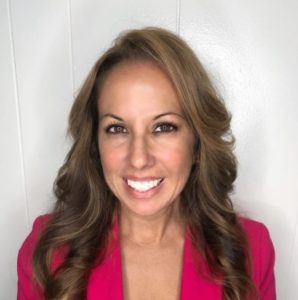Student Voice: A Vehicle Towards Equity

By Dr. Sara Bhonsale, Director of Partnerships Hawaii/Alaska, ACHIEVE3000
Recently, while in Juneau, I learned about the collaboration between the Yukon-Koyukuk School District and AASB to create a collection of interactive digital books. The books, published last school year, encompass stories, legends, and history of the local communities and are available to read here on the Yukon-Koyukuk District page. They are a collective effort between students, teachers, elders, district staff and other members of the community. What was most striking about these books is the overwhelming “voice” that emanates from each story. The students drove the creation and process. In addition to their creative vision, they provided their own stories, experiences, and history.
District initiatives are more frequently including student voice as a vesting vehicle for equity in the classroom. What exactly does this mean? How exactly do we channel student voice into empowering and equitable learning experiences for our learners? First, let’s dissect “Equity” as a concept.
Equality and Equity are markedly different, although we educators tend to use the two words interchangeably. When we speak of equality, we are implying that all of our students get the same resources, the same treatment. Equity, on the other hand, is a concept that indicates students have an equal outcome. We ensure that they are given the opportunities and resources that they need to be successful. Those sorts of opportunities are discreet and intentional in practice.
So, what works best?
Achieve3000 has partnered with Dr. Doug Fisher, a leading researcher and educator, who has done the legwork alongside John Hattie and others to dig deep into what works in the classroom and creates environments in which students can flourish. In Fisher, Frey and Hattie’s “Visible Learning for Literacy,” a meta-analysis was conducted to discover what sort of best practices provide optimal occasions to accelerate student learning. The highest effect sizes mostly involve the students using and applying their own voices. The practices also share the common thread of equity in accessibility- most students can participate and engage regardless of ability.

John Hattie’s metanalysis placed Classroom Discussion and other practices that incorporate Student Voice in the zone of desired effects showing positive growth for students.
Classroom discussion is one of the highest-ranked effect sizes in that positive learning zone of desired effects. Students need to have regular opportunities to draw from their encounters; sharing their opinions, world viewpoints and feelings. It’s important to offer these experiences for students to speak to their own backgrounds and their own presuppositions before we can expect them to respond to what we, as educators, expect them to read and learn.
Both metacognitive strategies and self-verbalization/self-questioning are highly ranked as well. Having students “thinking about their thinking” and “talking through” their cognitive processing allow for internal and metacognitive discourse, as well as offers a chance for peers and teachers to facilitate deeper discussions.
For example, we want students to read and learn about the Polar Bear Critical Habitat in North Slope, and the debate that ensued within the community back in 2010. Before we ask students to memorize the Endangered Species Act, and learn more about the Fish and Wildlife Service, we need to make a personal connection, and can do so using their voices. Drawing on students’ prior experiences in one of many ways we can engage, motivate, and connect them to their learning. Let’s ask the students themselves, “Should areas of your community remain a habitat for Polar Bears? Why? Why Not? What are your own experiences with this?”

Asking students to engage with their own voices is an effective practice of creating equity and success in the classroom.
After the students read that particular content, let’s ask them again. Students have now read information that has helped to develop their viewpoint and can strengthen or challenge their stance based upon those experiences. Give them opportunities to discuss with their classmate and help to facilitate other discussions with the group.
It’s also of note that Hattie’s research also ranks Self-Reported Grades and Student Expectations as having the highest effect size from his meta-analysis. Encouraging our students to track and be an active participant in monitoring their own growth, setting their own growth goals and celebrating their success is a true path to equity in the classroom. When we change the “expectation for all” into the “expectation for all to succeed” we level the playing field so to speak, and allow our students to personalize their metrics for success.
There is a defined link between the instructional practices in which students to share their own voices and equitability in measuring true learning. It does, however, require a shift in our pedagogy to provide frequent activities highlight students’ own experiences, as well as opportunities to engage in discussions that allow them to express their own viewpoints through multiple channels (writing, discussion, debate, et al). Finally, and arguably most important, we must foster within students the understanding that their individual success is not only essential, but possible to achieve with equity.
# # #
The views expressed here are the writer’s and are not necessarily endorsed by the Association of Alaska School Boards. AASB welcomes diverse perspectives and civil discourse. To submit a Guest Column for consideration, see our Guest Column Guidelines and email your 400-1000 word submission HERE.
